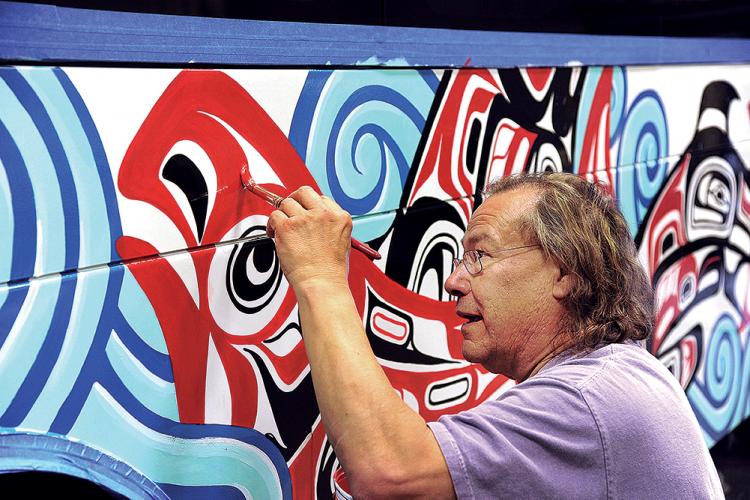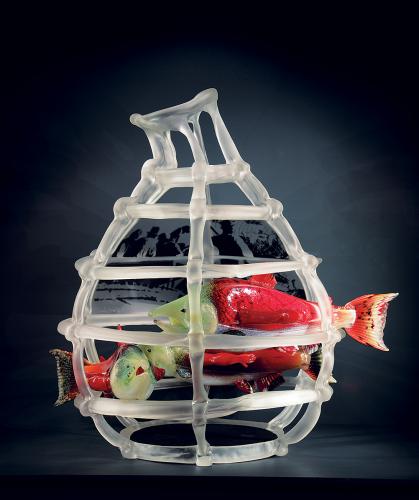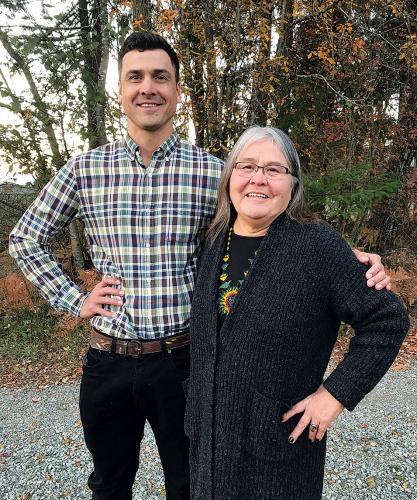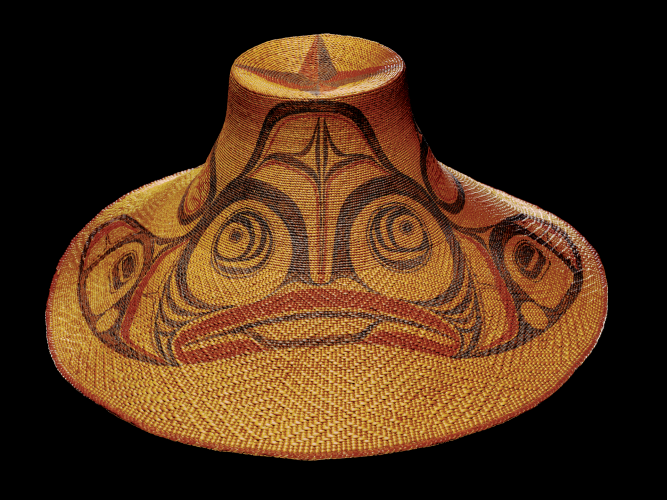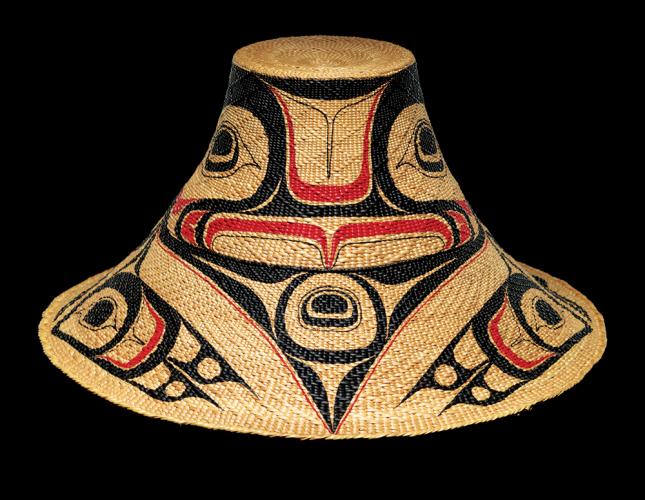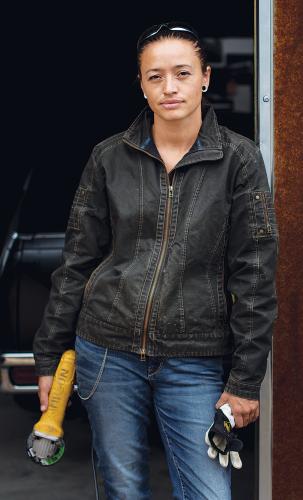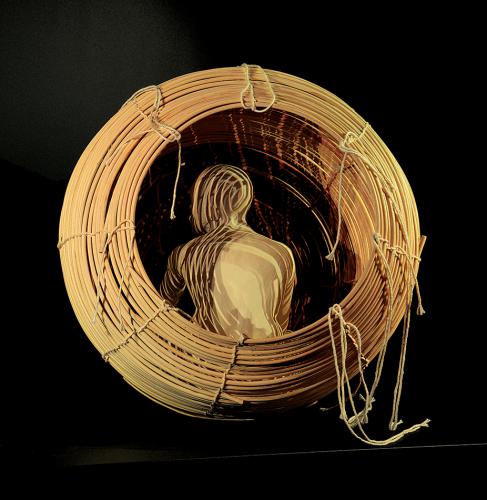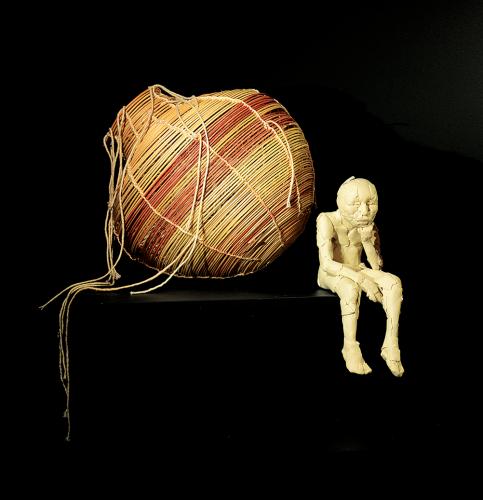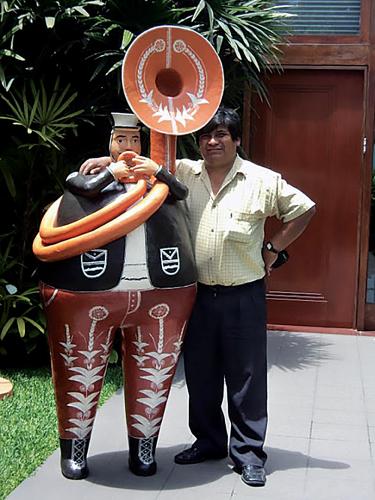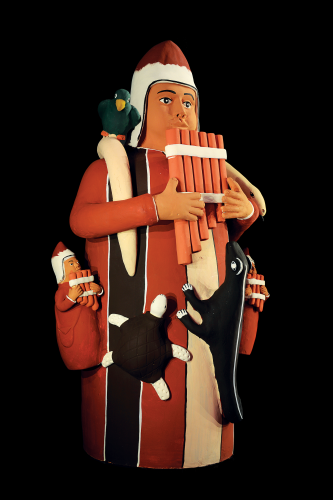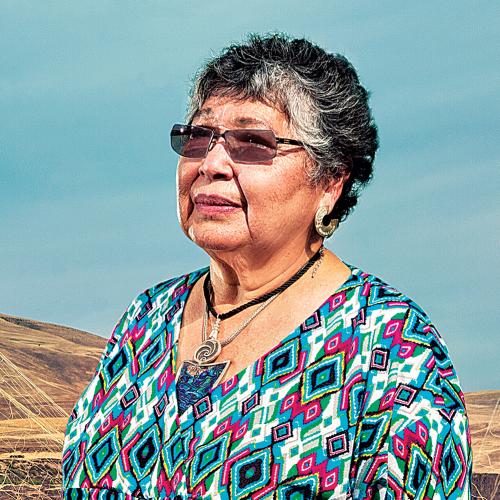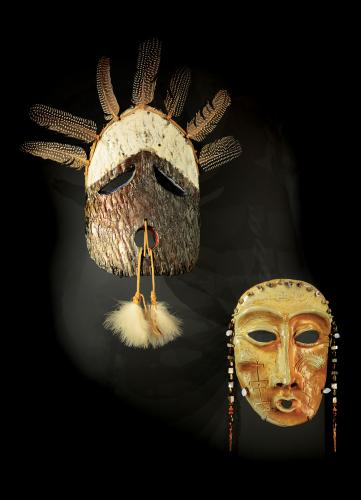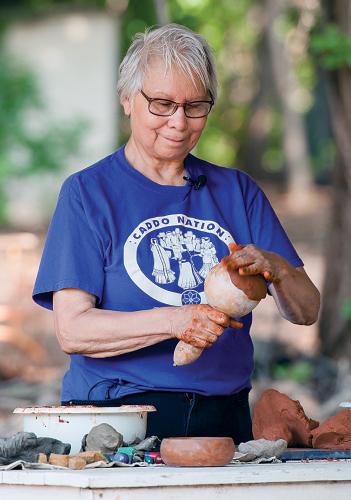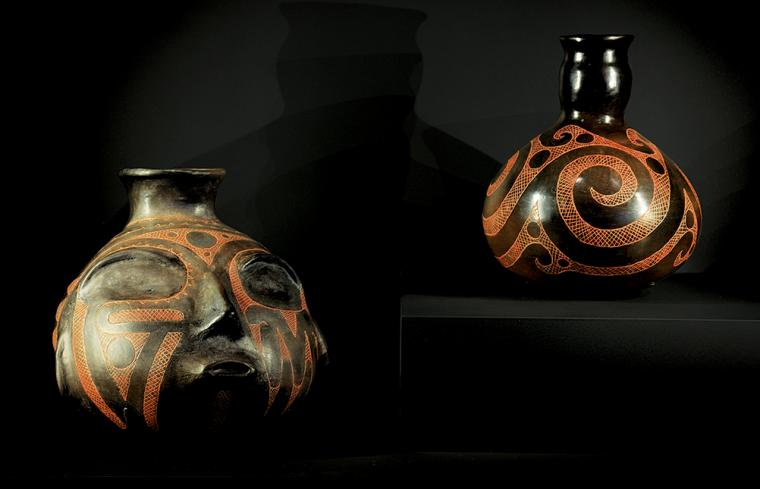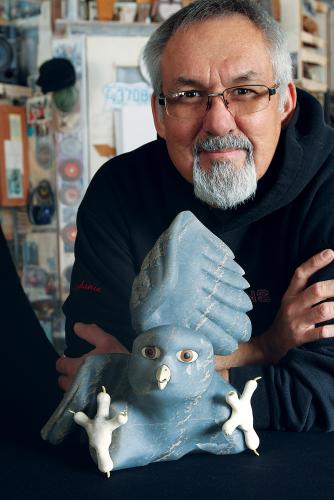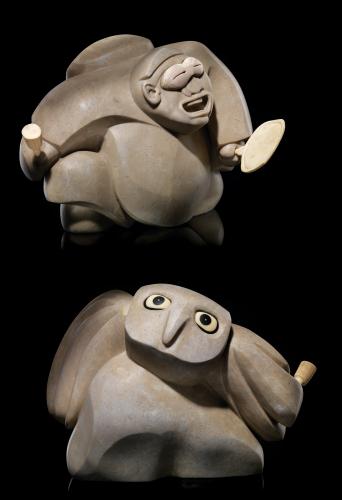From the cacophony of New York City’s busy streets, visitors can walk into one of the National Museum of the American Indian’s tranquil exhibition halls and enter another world. Ethereal music and a video playing on a large, bright screen entice visitors into the low-lit room on its first floor. The video’s rotating imagery brings to life 16 extraordinary contemporary artworks set in recessed, illuminated alcoves around the round room. Benches invite visitors to pause and take in the deep history each piece represents.
This “Ancestral Connections” exhibition— which opened this past spring—brings together the past and present of Native artworks spanning the Western Hemisphere. The pieces highlighted in the show vary greatly in their forms and origins, yet their creators share a common thread: all have been inspired by their Indigenous roots. “Even their act of creating could be a form of remembering, whether individual ancestors, or ways of life, or connections with the landscape,” says NMAI’s Ann McMullen, who curated the exhibition.
On one side of the Charles and Valerie Diker Pavilion where the artworks are displayed is a large glass fish basket that captures salmon spirits, hand-blown by the late Quinault/Isleta Pueblo artist Marvin Oliver of Washington state. Nearby, a face peers back from one of the two ceramic vessels by Caddo/Potawatomi potter Jeri Redcorn of Oklahoma. Two ceramic masks, one with feathers and another with beads, by Warm Springs/Wasco/Yakama artist Lillian Pitt from Oregon also hold your attention with their haunting gazes. Haida artists Isabel and Robin Rorick from British Columbia took inspiration from the striking red and black formline designs and weaving techniques of Haida hats by Isabel’s great-grandparents; two of the family’s hats, created generations apart, are on display. Jackie Larson Bread (Pikuni Blackfeet, Montana) has replicated a portrait of the tribal leader White Quiver from a historic photograph on one of her bright, beaded bags. And the white ceramic, traditional dress of Oklahoma ceramic and textile artist Anita Fields (Osage) appears to flutter in wind.
On the other side are sculptures that are startling, thought-provoking and even amusing. Evoking a Yup'ik mask, the brightly colored wooden figure of the late Tlingit artist Jim Schoppert sports outstretched arms with exaggerated forked hands. The expressions on artist Michael Massie’s (Labrador Inuit/Métis/ Scottish) dual-sided owl and hunter limestone sculpture also have a hint of whimsy. One can empathize with the small, pensive ceramic figurines sitting in and beside the twine and reed “pods” that Santa Clara Pueblo multimedia artist Rose B. Simpson created. And you can almost hear the flute being played by the grand Andean forest-dweller covered by animal companions that Gedion Caseo Fernandez Nolasco (Quechua) sculpted.
All of these artists are leaders in contemporary Native art, yet the path that each has taken to this point in their journey has not necessarily been along a straight line. For example, although Rose Simpson comes from a long line of Tewa potters, she had wanted to find her own identity. She left her home village of Santa Clara Pueblo in New Mexico to earn a master’s in fine arts in Rhode Island because “I wanted to see what I could make outside of the Indian art world,” she says. However, “One of the main things I learned was how much I actually am that no matter how hard I try to be something else. It is what nurtured me growing up. I can’t extract myself from it. It seeps through everything I do.”
Lillian Pitt grew up on the Warm Springs Indian Reservation in north-central Oregon. Her parents had been forced into government boarding schools that tried to get them to relinquish their own culture and did not talk to her about their American Indian heritage before their passing. So in the 1980s, Pitt sought the knowledge of her tribe’s elders to learn about her ancestors who lived in the Columbia River Gorge. “My community taught me,” she says. The elders took her to see ancient petroglyphs, including the face of She Who Watches overlooking her tribal lands. Pitt says, “It gave me a profound sense of identity and a strong sense of purpose.” She began working in clay to create masks but has since made bronze sculptures, silver jewelry, glass vessels, prints, tapestries and other renowned works that reflect the stories of her people.
Based in Kippens, Newfoundland, Michael Massie had a different reception when he first started creating art that was inspired by his Inuit heritage but incorporated metals from his Scottish side. In 1991, he made an Inuit ulu knife of silver and wood. At that time, he says, art critics had defined Inuit art as being only authentically Inuit if it took one of three forms—carved stone, prints or tapestry—so the knife created “quite a stir.” People became aware of his works and since then, his silver teapots and Inuit-inspired limestone sculptures are sought after in the Inuit art markets. In 2018, the Canadian government even appointed him to its prestigious Order of Canada for expanding the boundaries of Inuit art. “Art is art; the medium doesn’t matter. The person making it is the art,” says Massie.
The artists whose works are featured in the “Ancestral Connections” exhibition “all tapped into that sense of ancestry,” McMullen says, “but at the same time they are not necessarily bound by it. The past and traditional heritage are there to be reference points rather than rules. From there, art can move forward.”

